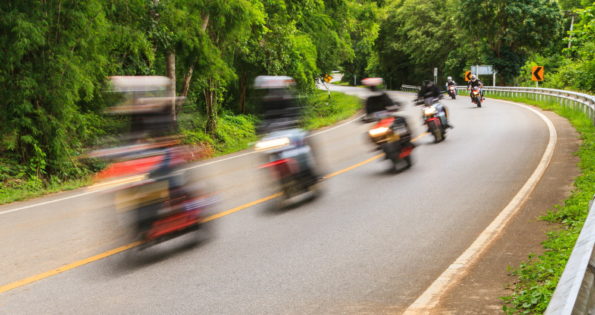Counter steering is where you make a small turn one way which tips the bike in the opposite direction and then you catch the fall by turning the handlebars back and balancing your weight in relation to the centrifugal force of the corner. This process is done almost subconsciously. Once you get above around 15km/h, motorbike steering is initiated using counter steering. It is quick and accurate.

Weight transfer is where you simply use your weight to lean the bike. This is less effective but still possible. If you take your hands off the bar and shift your weight, the bike will lean and the handlebars will turn. You can’t make sharp turns like this. The bike wants to continue moving forwards in a straight line due to the gyroscopic effects of the wheels, so simply shifting your weight doesn’t give much steering input. The bigger and heavier the bike, the less easy it is to steer using weight transfer.
If you lean a motorbike without steering, does it still turn?
As mentioned above, the gyroscopic action of the wheels means that they want to continue to move in the same plane. This is why you’ll sometimes see crashes in motorbike racing when the bike continues going until it hits an object.
When you lean the bike, the steering geometry naturally causes the handlebars to turn the wheel towards the lean in order to correct it. However, if you keep the bars straight, the motorbike will track in a fundamentally straight direction, but you will need to counterbalance the weight towards the opposite side otherwise you’ll tip over.
It won’t be perfectly straight, though, due to the change in radius of the tyres as you lean the bike, but it won’t be a sharp turn like it would if you were countersteering.
A motorcyclist may need to lean the bike in a strong side wind to counteract the forces of the wind.
